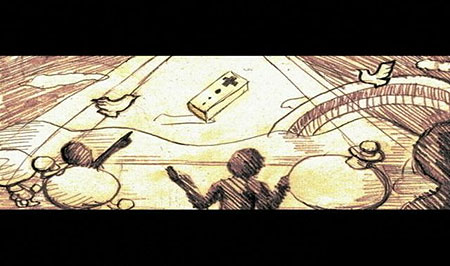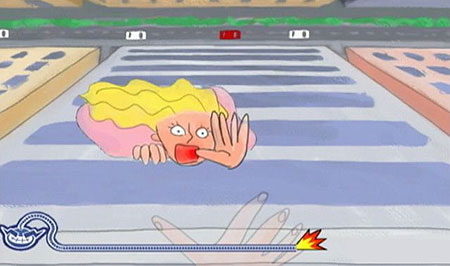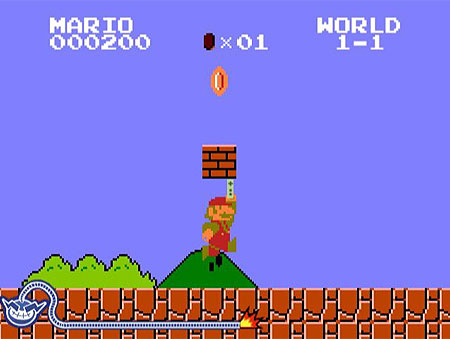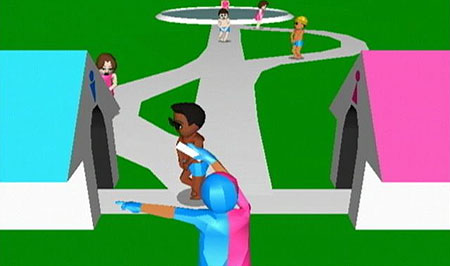"Heightened reality vignettes"
That phrase, stolen from aural cut-up artisans Negativland's 'Dispepsi' album (which itself was allegedly appropriated from an unnamed advertising executive's memo), has been stuck in my mind ever since I first heard band member "The Weatherman" utter its 'lyrics'. Within the song's context, it refers to an advertiser's vision for a specific commercial: To give the prospective viewers a supersaturated sense of reality without tripping into the fantastic ("We can go out of the ordinary, but we cannot live there"), ultimately portraying a glossier life for consumers when their product is in the picture, with all of life's little nuances and aggravations excised and out of the frame.
While Negativland rails against commercial advertising, perceiving it as a sinister and dishonest medium, I can't help but to occasionally be drawn into its abbreviated beauty. The 15 and 30 second advertising spots are, when executed by the right director and editor, exercises in simplicity, form, function, physiology and style. The allure of one message, boiled down to a brief bravado of cinematography and perfunctory sound-bytes is immediately alluring – one simple look at the attention paid to the Super Bowl commercials validates that. For better or for worse, these advertisements, be they television commercial spots or a music video, are the 'new' short forms of cinematic storytelling, creating new techniques and methods to physiologically string together empathetic characters and a brief-but-precise narrative*. Similarly, micro-focused games like WarioWare: Smooth Moves, as opposed to the bite-sized episodic games, are becoming the newly influential short forms of gaming.
"Heightened gaming vignettes"
WarioWare: Smooth Moves for the Nintendo Wii works on an entirely different level than its predecessors. It, like the prior

So not only do you have the manic expectations of having to immediately deduce the objective of the mini-game, but you also have to figure out the language it's speaking. Because of the motion sensing capabilities of the Wiimote, executing each mini-game's task is no longer a straightforward matter of pressing a button (or tapping or stroking the screen, as with WarioWare: Touched for the Nintendo DS), it's literally much broader than that. For example, 'The Mohawk' requires that you hold the baton on your forehead, facing towards the screen, mimicking the placement of a mohawk hairstyle, while the 'The Samurai' has you hold the Wiimote by your hip.
The beauty of these form baton methods are that each one simply describes the initial stance, and not the full number actions to fulfill the mini-game's objective. Take for instance, 'The Waiter', which requires that you place the Wiimote, face-up, on the palm of your hand, just like a waiter carrying a tray out to a table. A mini-game may require that you tilt your hand to roll a ball into a hole, or it may ask you to bounce your hand up and down, to get someone's paper table wrestling doll to fall down. How quickly you're able to figure out what the game asks of you is half the challenge. Again, we're no longer speaking the limited language of on/off button presses – we're instead trying to articulate our on-screen action with multi-dimensional body language.

We're not just relearning button presses, we're retraining ourselves on how to hold the controller each time, how to use it and when to use it. And while Wii Sports may have incorporated a sense of user-initiated force to gaming (as evidenced by the high number of reported Wii-related accidents), Smooth Moves expands the field a hundred-fold by requiring not only simple strokes, but a litany of movements, a dictionary of motion. This is what WarioWare: Smooth Moves ultimately excels at: Building and growing video game literacy and gameplay vocabulary.
Of course it's one thing to create a language; it's another thing entirely to have an audience adopt it. To ease the brunt of this, most of the Smooth Moves mini-games focus on reality – while the presentation and situations may be nonsensical, we all can easily visualize shoving a person in front of us, or balancing an umbrella – as well as riffing off previously tried-and-true gameplay franchises. By thrusting us into abbreviated levels from Super Mario Bros and Zelda we're given cues on how to adapt our gameplay tongue, to migrate from the control pad to the Wiimote. We lurch our controller into the air to leap up for Mario's coins and we tilt the controller to pilot Link to safety. And then there are the numerous other, non-Nintendo related, games that Smooth Moves merely recalls, such as conducting band members in Mad Maestro, posing with your maracas via Samba de Amigo or mimicing dancing moves with Ulala in Space Channel 5 - all executed instead with elegance via the Wiimote.

Of course, these referential techniques are also employed by commercials as a type of visual or narrative shorthand. Not only is it easier to reference cultural cornerstones than to create new ones, but it's much, much faster. And with WarioWare, speed is of the essence – everyone knows that Mario jumps up for coins. These are ingrained, even tired, devices & archetypes that are convenient shortcuts to conveying a point or objective, not unlike the overworked suburban mother or rushed businessman on-the-go in your standard ad spot's narrative. They're simple, even crude, but often effective.
Utilizing such shorthand, Smooth Moves manages to, in five-second bites, showcase a glossier life for gamers, a life where your body movements are transcribed and interpreted by the game, resulting in picture-perfect fun for all involved parties. Each mini-game is a glorious, but fleeting, moment where our gaming senses are hyper-stimulated, lit-up, just waiting to spring forward and accomplish each nebulous goal, be it picking someone's nose, directing desperate men and women to their gender-respective bathrooms, or slicing an encroaching ninja in half at just the right time.

Smooth Moves is, moreso than the effervescent Wii Sports, a brilliant collection of ad spots for the Wii: It's a compendium of five-second-long vignettes showcasing the versatile and numerous control methods of the form baton/Wiimote. The eclectic series of Wiimote movements is a virtual showroom for just how ambitious developers can successfully work the hardware. Certainly, Smooth Moves leaves critics scratching their heads, wondering 'can developers recreate this level of fun for extended periods of time?' to which, the advertisers would obviously say "Who cares? Buy now! Supplies are limited!" and to which, I'm tempted to reply in the same manner. Smooth Moves is the best pitch-job for a console I've seen in some time, one that is infinitely re-playable simply because of its controller and the unique, expansive, experience it can provide, which is far more than we can say of prior WarioWare games and even most launch-window games. And while Smooth Moves can't answer whether future long-form Wii games can sustain the same amount of glee, it definitely shows that, in a gaming life where nuances, aggravations and story are excised, such boundless fun can be attained.
* Although it probably should be noted that, back in the 60s and 70s, many tv commercial directors were lifting concepts and techniques from experimental filmmakers like Kenneth Anger.




#1 Servo Mar 17, 2007 07:46pm
Very nice. You always articulate so well what I feel but can only express in grunts and hurled fecal matter.
As I played through Smooth Moves, I constantly thought, "hey, this way of using the wiimote could spawn a game where you do such-and-such". I anxiously await a fully mature, in-depth fencing game.
#2 Grimson Mar 17, 2007 10:45pm
Movie trailers are, I think, a perfect example of what you're describing in the opening paragraphs. I often find condensing a a feature length film into a tiny montage of what the film is to be about to be a sometimes daunting task. When you find some artistry involved in the process, the effect can be almost more alluring than the film itself.